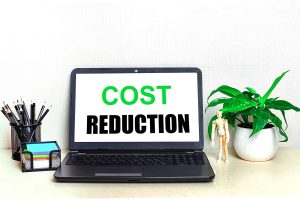Estimated reading time: 8 minutes
Key Takeaways
- Depreciation spreads the cost of tangible assets over their useful lives, ensuring fair profit measurement.
- It directly affects financial statements, providing a clearer picture of *net book value* and profitability.
- Choosing the right depreciation method—straight-line or accelerated—can optimise **tax deductions**.
- Regular asset reviews help prevent overvaluation and support informed reinvestment decisions.
- Compliance with IFRS depreciation guidelines safeguards against regulatory pitfalls.
Table of Contents
Introduction
Depreciation is the systematic reduction in the value of tangible assets—machinery, buildings, vehicles—over time. By acknowledging an asset’s *wear, tear, and obsolescence*, businesses can align expenses with the revenue those assets generate, producing a truer representation of financial health.
Understanding Depreciation
At its heart, depreciation is an allocation method, not a valuation technique. While *market value* may fluctuate unpredictably, depreciation schedules recognise a predictable pattern of asset consumption.
- Depreciation – tangible assets (e.g., equipment)
- Amortisation – intangible assets (e.g., patents)
- Depletion – natural resources (e.g., minerals)
By differentiating these concepts, companies avoid accounting misstatements and maintain compliance with governing standards.
Types of Business Assets Subject to Depreciation
- Machinery and heavy equipment
- Office technology and tools
- Fleet vehicles and delivery vans
- Commercial buildings and warehouses
Asset value declines stem from physical *wear and tear* and technological *obsolescence*. A five-year-old laptop, for instance, may still function but rarely competes with modern alternatives.
Calculating Depreciation
Two mainstream methods dominate business practice:
- Straight-Line: (Cost − Residual) ÷ Useful Life
- Declining Balance: Book Value × Rate
Consider a delivery van purchased for £30,000 with a £5,000 residual value and a 5-year life. Straight-line depreciation equals £5,000 annually.
Impact on Financial Statements
Depreciation appears as an expense on the income statement, reducing reported profit. Meanwhile, the balance sheet carries the asset at cost minus accumulated depreciation, revealing its *net book value*. This dual presentation offers investors a transparent window into asset utilisation.
Depreciation & Tax Deductions
Because depreciation lowers taxable income, it serves as a powerful tax-planning lever. Many jurisdictions cap annual deductions or mandate specific schedules, so aligning internal policy with capital allowances rules is essential.
Managing Depreciation
- Maintain an up-to-date fixed-asset register.
- Review useful lives periodically to match actual usage.
- Leverage accounting software for automated calculations.
- Quote: “What gets measured gets managed.” – Peter Drucker
Case Studies & Examples
A manufacturing firm installs a production line for £500,000, expecting a £50,000 residual value after 10 years. Using straight-line, annual depreciation is £45,000. After 5 years, accumulated depreciation is £225,000, leaving a book value of £275,000—key data for lenders reviewing the company’s collateral strength.
Conclusion
Mastering depreciation enables businesses to portray accurate financial performance, optimise taxation, and schedule timely asset replacements. Whether adopting the simplicity of straight-line or the front-loaded benefits of accelerated methods, the ultimate goal remains the same: *match cost with benefit* for transparent, strategic decision-making.
FAQ
How does depreciation differ from amortisation?
Depreciation applies to tangible assets like machinery, while amortisation concerns intangible assets such as trademarks.
Can I switch depreciation methods midway?
Yes, but you’ll need to justify the change and disclose it in financial statements to comply with accounting standards.
Does depreciation impact cash flow?
Indirectly. Depreciation is a non-cash expense that lowers taxable income, potentially increasing after-tax cash flow.
What is residual value?
The estimated amount an asset will fetch at the end of its useful life—also called salvage value.
Why is useful life important?
Useful life determines how quickly an asset’s cost is expensed, affecting both profitability and tax liability.







